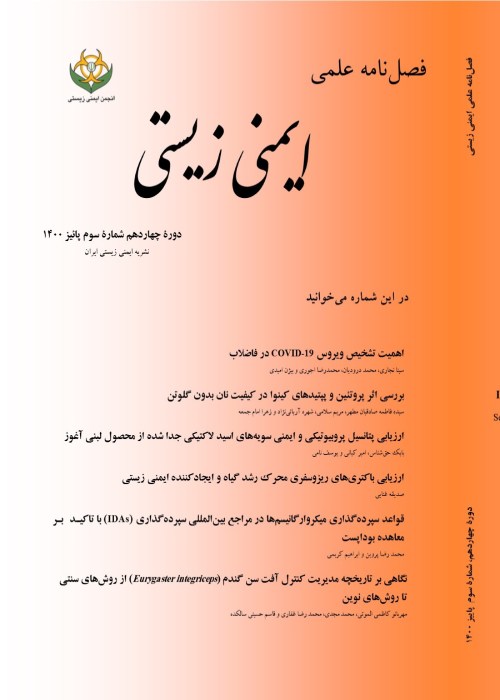The affect mechanism of nanoparticles on physiological responses of aquatic animals
Author(s):
Abstract:
Nanotechnology is currently the most advanced and latest technology that converges human physics, chemistry and biology there. Biological and ecological study of fish in an aquatic ecosystem leading to the identification and analysis of ecological food chain ecosystem. This would apply sound management of fisheries and the widespread use widely significant development of nano-technology in various fields of industrial Nano materials necessity its harmful effects on health is exposure of the use of nanoparticles should be considered toxic because they can be answered, such as chronic inflammation and the production of oxygen free radicals associated nanoparticles of materials with dimensions of class 1 and 100 Nanometers has very specific physical and chemical characteristics of size, shape and high surface to volume ratios. Also are new features like Solubility, mobility and ability to penetrate the cell membrane is very much in the human body can be named which makes nanoscale over other measures to be considered. According to the emerging nanotechnology has the potential risks of these particles to the environment is not an accurate assessment.
Keywords:
Language:
Persian
Published:
Journal of Biosafety, Volume:9 Issue: 1, 2016
Pages:
31 to 40
magiran.com/p1969589
دانلود و مطالعه متن این مقاله با یکی از روشهای زیر امکان پذیر است:
اشتراک شخصی
با عضویت و پرداخت آنلاین حق اشتراک یکساله به مبلغ 1,390,000ريال میتوانید 70 عنوان مطلب دانلود کنید!
اشتراک سازمانی
به کتابخانه دانشگاه یا محل کار خود پیشنهاد کنید تا اشتراک سازمانی این پایگاه را برای دسترسی نامحدود همه کاربران به متن مطالب تهیه نمایند!
توجه!
- حق عضویت دریافتی صرف حمایت از نشریات عضو و نگهداری، تکمیل و توسعه مگیران میشود.
- پرداخت حق اشتراک و دانلود مقالات اجازه بازنشر آن در سایر رسانههای چاپی و دیجیتال را به کاربر نمیدهد.
In order to view content subscription is required
Personal subscription
Subscribe magiran.com for 70 € euros via PayPal and download 70 articles during a year.
Organization subscription
Please contact us to subscribe your university or library for unlimited access!


